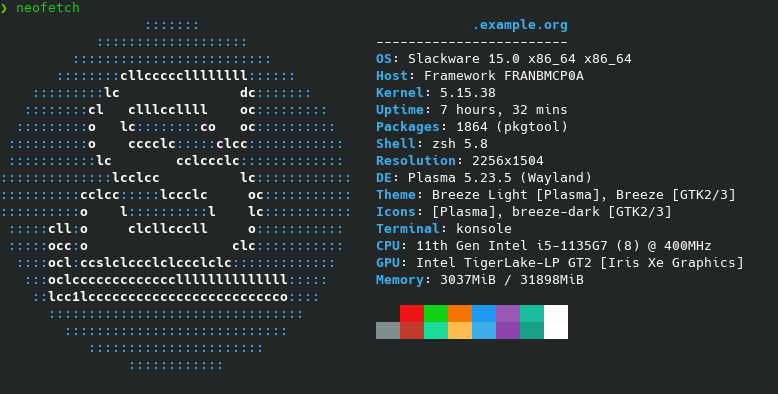1. Framework Laptop

I came across the Framework laptop a while ago when it was featured on a number of articles ranging from Ars Technica, Tom's Hardware, CNET, and iFixit.
This coincided well with my search for a new laptop. The 2015 MBP 13-inch Retina had really served me well for a while. It is a laptop that introduced me to amazing battery power and the ability to work on a portable system that did not require kid gloves. However, after five years, the usual battery bulge and failure of speakers meant that it became a challenge to continue with the laptop. While several parts are available outside the "Apple Service Programme", sourcing them, testing their quality and negotiating the use of the right parts became a challenge. Additional challenges were posed as the new OS upgrades that Apple released seemed to constantly slow down the system. This isn't very surprising; my experience has been that updates from Apple have continued to help improve the experience (barring the minor hiccup due to my tooling). However, every couple of updates have also meant that the demands on the hardware increases. This is where Apple as pointed out by many customers and proponents of sustainability needs to do more. The fact that there are so many soldered, bolted, glued components with proprietary designs actually makes it a nightmare for folks to upgrade and maintain the hardware.
1.1. What I need?
Given these struggles, I was not keen on buying another Apple device as a primary device. I was looking at a device that would,
- Be eco-friendly by allowing for greater repairability
- Provide greater interoperability
- Respect privacy (remember Apple's wonderful
CSAM approach?)
- Allow for sourcing parts easily and locally
- Does not require expensive service agreements or specific highly priced equipment
for repair
- Greater storage capacity
1.2. What do I give up?
While transitioning out of using an Apple device, I was willing to,
- Work with lesser battery life
- Spend a little time to tinker around with software as and when required
- Reworking my tooling (for personal and professional work)
1.3. First Impressions
Given the limited time that I have spent on the Framework Laptop, I am impressed by,
- Build quality: Serious thought has gone into creating the laptop for long-term usage. A few details that caught my eye (the additional screws, captive screws, the hinge stability, etc.), and are a treat to encounter the first time.
- The ease of assembling: The packaging of a screwdriver, presence of QR codes everywhere, use of standard screws, the availability of easily accessible tutorials and videos (many of them from the community) makes setting up the process a breeze.
- One of the tenets for this blog is "friendly community", I have been lurking on the various channels Framework has setup and it is remarkable to see how well the community has very quickly formed around this hardware. This reminds me of the early days of Hackintosh, a few FOSS projects and the Frankenpads.
1.4. More to follow
I hope to continue to write about this laptop as I continue to use it, a few quick thinks that I will post about shortly,
- Choice of SSD and RAM
- Choice of power adapter
- Setting up Linux
- Choice of distribution
- How-Tos
- Gotchas
- Wrapping up
- Setting up a VM with Windows 11 (for the obligatory requirements all of us have)